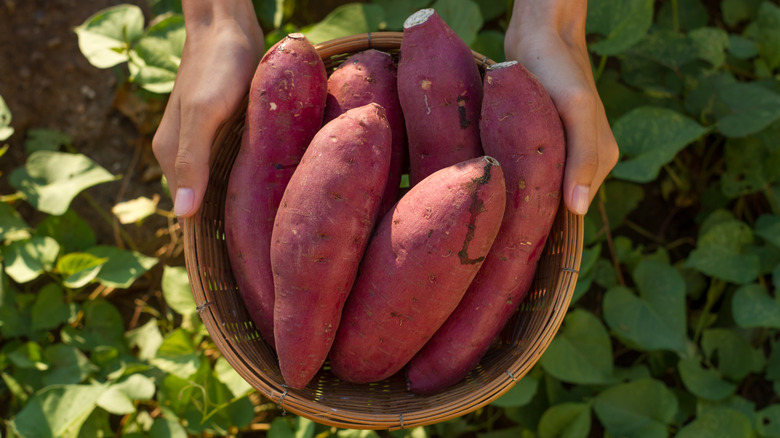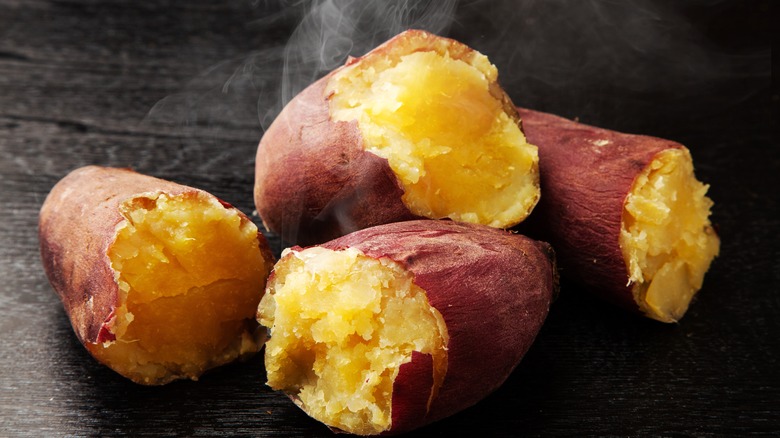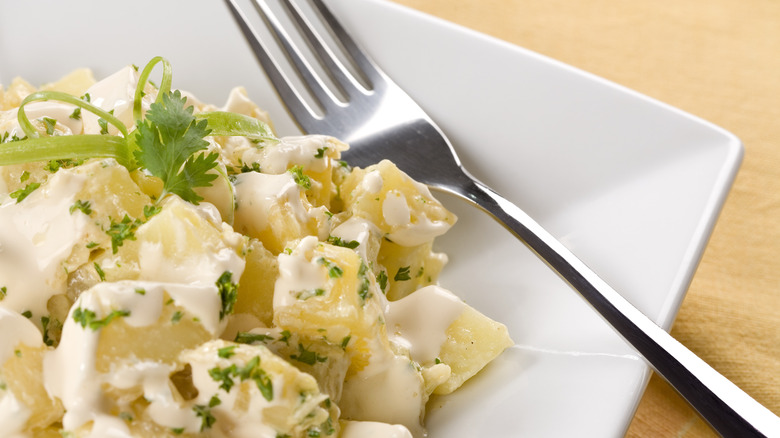Sweet Potatoes And White Potatoes Aren't As Related As We Thought
At first glance, sweet potatoes and white potatoes seem related. After all, they are both root vegetables, are usually sold side by side, and both have "potato" in their names. But botanically, they are only distantly related. The sweet potato belongs to the Convolvulaceae or morning glory family, while white potatoes (and other types of potatoes) come from the Solanaceae or nightshade family, which includes tomatoes and eggplants.
Both of these tubers have distinct differences in terms of appearance, taste, and culinary uses. Sweet potatoes have an elongated shape and skin in hues of copper, orange, or purple. The flesh inside can be vibrant orange, yellow, or purple. The sweet potato is often mistakenly called a "yam" in the United States, although a true yam is a completely different root vegetable.
On the other hand, potatoes come in over 5,000 varieties including russet, Sebago, and Yukon gold. They typically have brownish, yellow, or red skin and white or yellow flesh.
Sweet potatoes can be used in both sweet and savory food
Sweet potatoes, as the name suggests, have a naturally sweet taste with a hint of earthiness. Their texture is softer and moist when cooked, making them ideal for both sweet and savory food. The Japanese variety of sweet potato has red-tinged skin and cream-colored flesh while, compared to other varieties, the flesh is drier and less sweet. In Japan, whole roasted sweet potato is a common snack, and kuri kinton, a dish of mashed sweet potatoes and chestnuts, is served during the Japanese New Year.
Even if you cannot get your hands on Japanese sweet potatoes, regular sweet potatoes make for a great baked or fried snack instead of fries or chips, but getting them to be crispy rather than soggy can be a challenge. To avoid this, try getting rid of some of the starch, which can burn more easily, by rinsing the sweet potato before cooking it.
Potatoes are mostly used in savory food
Potatoes tend to have a mild, earthy flavor and a dense, starchy texture when cooked. They are widely used in savory dishes and are considered a staple food in many cuisines. Spuds can be boiled, mashed, roasted, curried, or fried to create a multitude of dishes including French fries, mashed potatoes, potato gratin, or vada pav.
The trick to cooking potatoes is choosing the right kind for your dish. This can be challenging at first, given the sheer number of varieties out there, but there are two general categories: high-starch (like russet) and low-starch, or waxy potatoes (such as red potatoes).
High-starch potatoes are fluffy and spongy which makes them great for baking, mashing, and deep-frying for crispy, perfectly-browned results. The spongy quality also makes them ideal for curries and stews as they absorb flavor well. Waxy potatoes are typically smaller and stay firm when cooked so it is best to roast or boil them for potato salads or casseroles.


